A guide to Trident and the debate about replacement
- Published
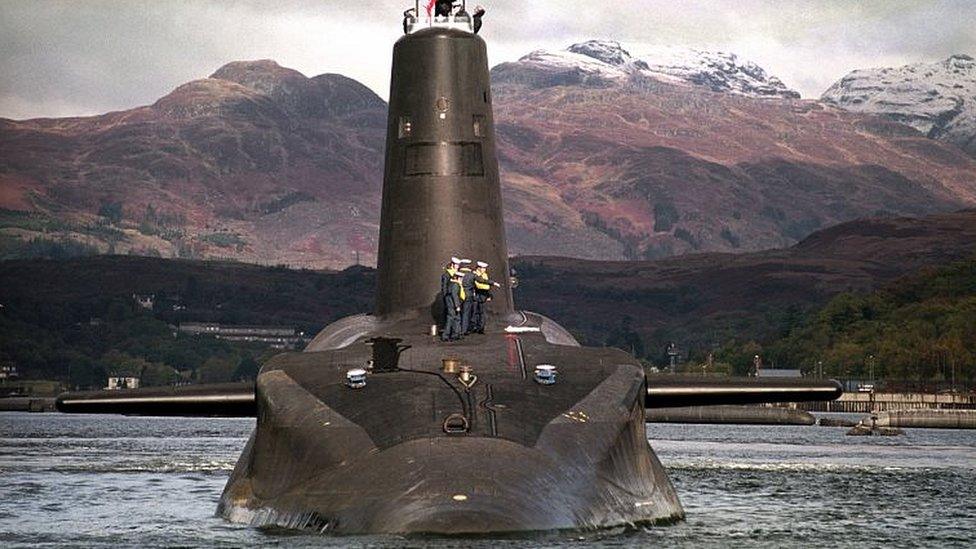
MPs have backed building replacements for the UK's Vanguard fleet of four submarines carrying Trident nuclear missiles. The subs are due to become obsolete by the end of the next decade.
What is Trident?
Since 1969, according to government documents, external, a British submarine carrying nuclear weapons has always been on patrol, gliding silently beneath the waves, somewhere in the world's oceans.
The logic is to deter a nuclear attack on the UK because, even if the nation's conventional defence capabilities were destroyed, the silent submarine would still be able to launch a catastrophic retaliatory strike on the aggressor, a concept known as mutually assured destruction.
The submarines carry up to eight Trident missiles. Each can be fitted with a number of warheads, which can be directed at different targets.
Each of the four submarines carries a sealed "letter of last resort" in the prime minister's hand, containing instructions to follow, external if the UK has been devastated by a nuclear strike and the government annihilated.
What is Trident's history?
It was acquired by the Thatcher government in the early 1980s as a replacement for the Polaris missile system which the UK had possessed since the 1960s.
Trident then came into use in the 1990s. There are three parts to Trident - submarines, missiles and warheads. Although each component has years of use left, they cannot last indefinitely. The current generation of four submarines would begin to end their working lives some time in the late 2020s.
Work on a replacement cannot be delayed because the submarines alone could take up to 17 years to develop. Only one submarine is on patrol at any one time and they are normally kept at a "notice to fire" of several days.
What are the arguments for replacing Trident?
Andrea Berger, from the Royal United Services Institute, says the government argues that the UK faces an uncertain "future threat environment".
We are unable to foresee the emergence or re-emergence of threats that have a nuclear dimension sufficiently far in advance, government officials say. They will point to concerns about the resurgence of aggressive Russian policies.
In that uncertain environment, the argument is made that the UK needs to ensure it is taking decisions now which mean that in future decades we have options available for defence and deterrence.
Although Trident submarines, missiles and warheads have years of use left, they cannot last indefinitely. Work on a replacement could not be delayed because the submarines alone could take up to 17 years to develop.
Supporters of replacement argue that threats from rogue states and terrorist groups could emerge at any time and a minimum nuclear deterrent is needed to help counter them.
The nuclear defence industry is also a major employer. Some estimates suggest that up to 15,000 jobs may be lost - as well as considerable expertise - if a new batch of submarines is not commissioned.
What are the arguments against Trident?
Some who object on ethical grounds say the UK should never be a country that is willing to threaten or use nuclear weapons against an adversary, even in the most extreme circumstances and that the humanitarian consequences of doing that would be so grotesque as to be unfathomable, says Rusi's Andrea Berger.
Labour leader Jeremy Corbyn, for example, has said that he could never be the person to press the nuclear button.
Others who object on the basis of cost assessments say that the UK should not be spending possibly £40bn on a programme that is designed for uncertainty and indeed that an "uncertain future threat environment" may mean no threats arise and so £40bn would have been spent unnecessarily.
There are still others, says Ms Berger, who suggest that actually it is not so uncertain and the prospect of a significant threat arising to the UK in the timeline of the successor submarines is so remote as not to be worth taking significant action now.
Has renewal work started?
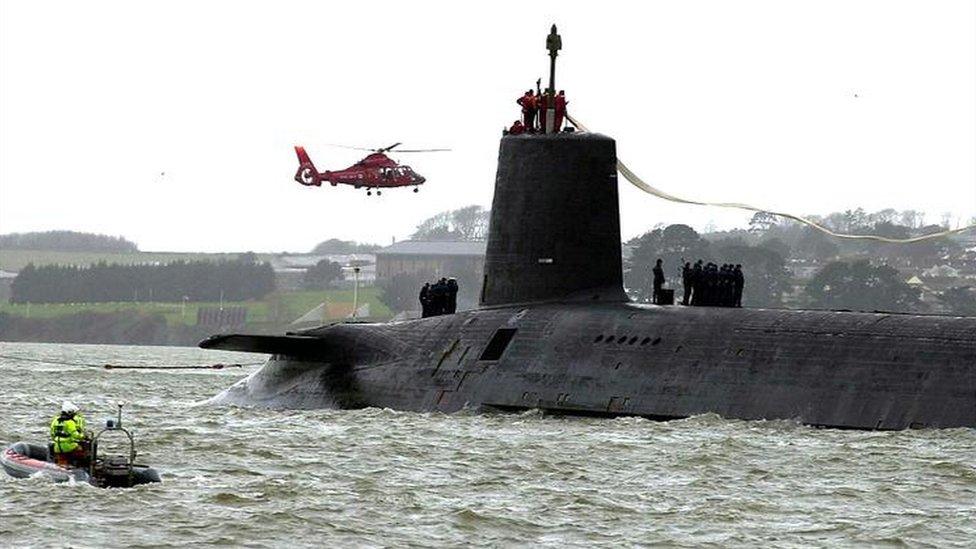
The Royal Navy's nuclear submarine - HMS Vanguard - is 150 metres long
Since 2007, when MPs backed plans to renew the Trident fleet by 409 votes to 61, "conceptual" work has been going on considering potential designs for replacement submarines, propulsion systems and other key components.
The "Initial Gate" phase, consisting of £3bn in procurement of important items, has also been approved.
But in October 2010, the government decided to delay the ultimate decision on whether to proceed and how many submarines to order until 2016. The delivery date for the first submarine was also put back to 2028.
How much will replacement cost?
According to Rusi's Andrea Berger the government says it needs £31bn over the lifetime of the programme, including adjustment for inflation over that period, and an additional £10bn as a "contingency".
Campaign group Greenpeace claims it will run to at least £34bn once extra costs like VAT are factored in. The Lib Dems say ordering fewer submarines would save up to £4bn in the long term but Conservatives have rejected this - saying the savings made would be "trivial" in respect of the Ministry of Defence's annual £34bn budget.
Labour's shadow defence team have called for more transparency in the government's estimates, including what the £10bn "contingency" cash will be spent on.
Currently, the government is spending around 6% of its annual defence budget on Trident, the Ministry of Defence (MoD) has confirmed.
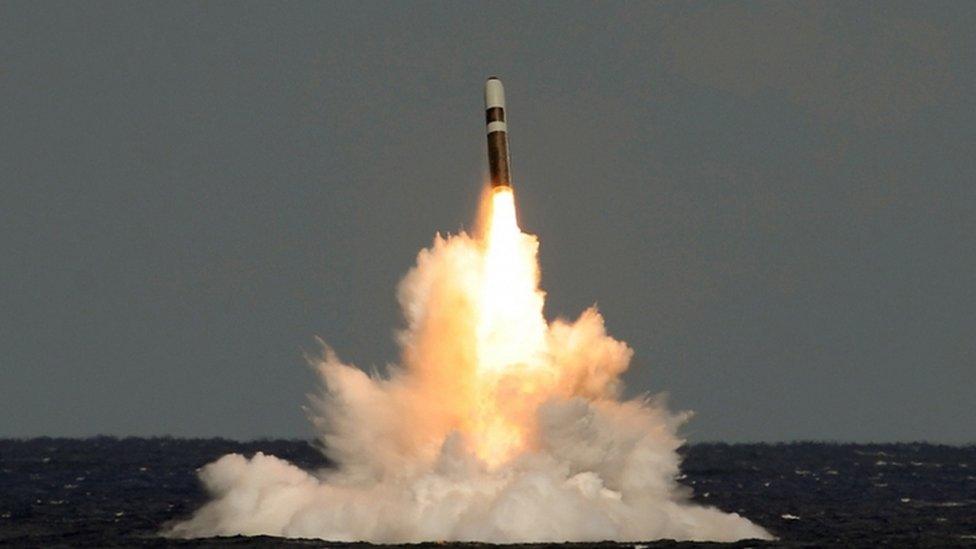
What are the alternatives?
Trident's ballistic missiles have a long range, of up to 7,500 miles. One alternative that has been suggested is using cruise missiles based on different submarines. But cruise missiles have a far shorter range, of over 1,000 miles, and are slower and vulnerable to being shot down. The government review concluded this would actually cost more than renewing Trident in its current form, since the UK might have to bear all the research and development costs of its own programme.
Others have suggested using a land-based delivery system, to avoid the cost of building new submarines. That has been rejected in the past as too vulnerable to attack and impractical although the 2013 options review said this could potentially be mitigated by having fewer "silo" sites that were more strategically located.
Some say it would be cheaper to launch missiles from a long-range aircraft. However, the shorter range would again be an issue - and the aircraft could be brought down. The review said "much more work" would be needed on such an idea.
How do Britain's nuclear weapons compare with others?
The UK is the only nuclear weapons state that deploys submarines as its sole nuclear weapons delivery platform.
Other countries use multiple platforms. The United States has all submarines, bombers and silo-based Continental Ballistic Missiles.
France has planes and submarines; China has a mix of road mobile missiles as well as a backup role for nuclear aircraft, and is moving towards deploying submarines in the future as well.
Are Britain's nuclear weapons independent?
Past prime ministers have always stressed Trident's independence, saying its firing does not require the permission, the satellites or the codes of the US.
However, critics argue Britain is technically so dependent on the US that in effect Trident is not an independent system. For example, the British Trident missiles are serviced at a port in the Georgia, US, and some warhead components are also made in America.
As part of the renewal, common missile compartment systems that could be fitted into both UK and US submarines are set to be developed as a means of saving money.
It could be argued that having a powerful nuclear ally in the US, Britain does not need an atomic weapons system of its own.
But Andrea Berger of Rusi says some believe the decisions taken by an adversary are made harder if countries which are allied and have common strategic outlook are nevertheless able to take decisions independently.
- Published30 June 2013
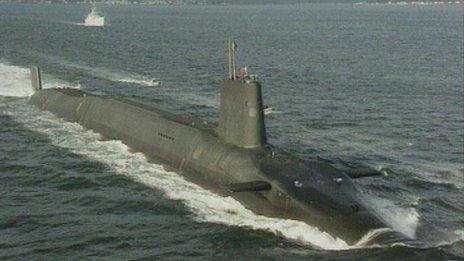
- Published28 May 2013
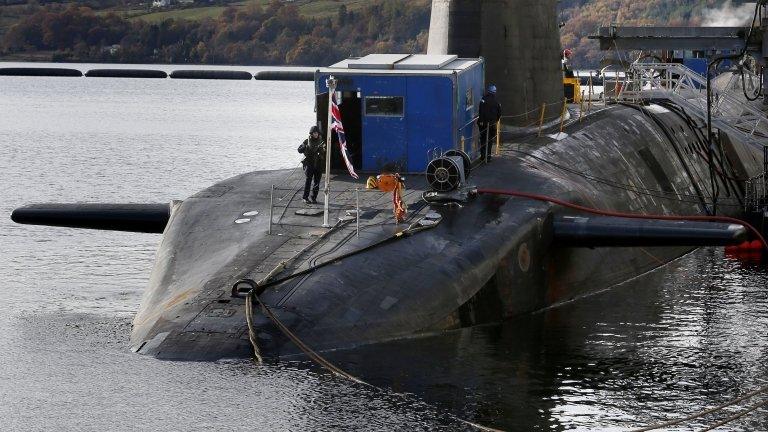
- Published19 May 2011